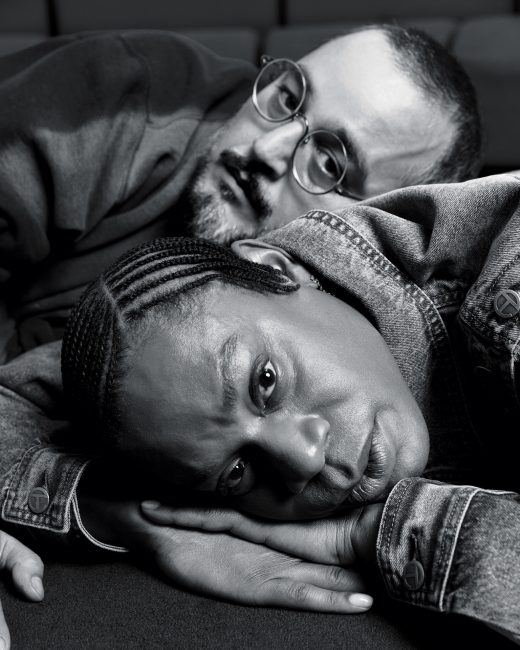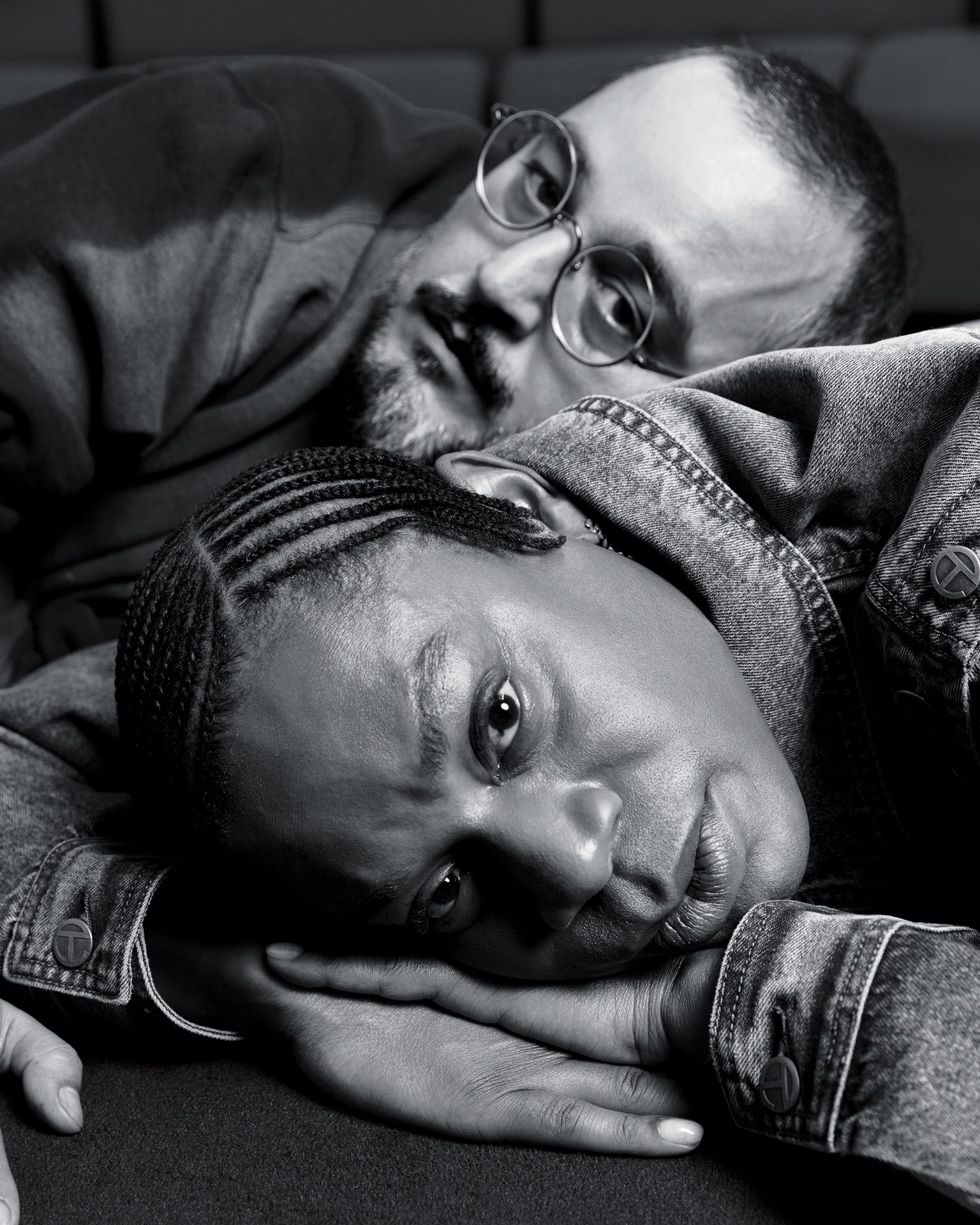How Telfar Clemens used inclusive exclusivity to build his namesake brand into a powerhouse
On a dreary February day in New York City, the Queens-based fashion designer Telfar Clemens is 3,000 miles away, sitting in a thatched-roof bungalow overlooking a beach in the Mexican resort town of Puerto Escondido. Beside him, his business partner and co-creative director, Babak Radboy, is wearing a faded orange tee and round wire glasses, rolling a cigarette. Clemens himself is shirtless, wearing a gold necklace and black shorts, both emblazoned with his brand’s logo, a T encircled by a C.
The pair look cozy together. “My Wikipedia page used to say that Babak and I were a couple, and that we had a son together,” Clemens recalls, laughing. (Radboy is actually married to Telfar’s stylist, Avena Gallagher, and their 8-year-old son, Malcolm, sits behind him playing a video game.) “I just believe in never working with anyone I don’t like.”
Telfar and Radboy hopped on a plane to Mexico after shooting their Spring/Summer 2023 collection for a weeklong escape from the frenetic pace of their past couple years. Telfar’s logo-embossed tote bags, priced between $150 and $258, were the most-searched accessory of the pandemic, according to shopping app Lyst. They’ve been spotted on everyone from Alexandria Ocasio-Cortez to Megan Thee Stallion; Beyoncé gave them a shout-out on her 2022 album, Renaissance, saying that she’d put her Hermès Birkin in storage in favor of a Telfar status bag.
Those bags, which sell out on the Telfar website in seconds, have become the foundation for a fast-growing fashion brand that includes streetwear, shoes, and other accessories. In 2019, Telfar reportedly took in $1.9 million in revenue. Today, the company can make upwards of $7 million in a single product drop. In part because of its move from a wholesale model to a direct-to-consumer one in 2019, Telfar’s DTC U.S. sales grew an eye-popping 362% in 2021, according to Bloomberg Second Measure, followed by 17% growth in 2022. So far, Clemens and Radboy’s 2023 has involved transforming the brand’s new Ridgewood, Queens, studio into a soundstage for film and photo shoots; collaborations with Ugg and Canadian outerwear maker Moose Knuckles; and the release of a highly anticipated wallet that sold out within five minutes. “Sometimes we need a trip away from it all,” Clemens says. “We hang out here in Mexico a lot. And even here, you see people carrying our bag.”
Amid his brand’s increased visibility, the 38-year-old Clemens has often been portrayed as an up-and-coming designer, but he’s been at it since 2004, when he launched Telfar as a teenager. Starting with unisex clothing that toyed with gendered styles—slinky spaghetti straps for men and oversize basketball jerseys for women—Telfar has focused on groups that the fashion industry has long ignored, like Black and queer consumers. “Clemens catered to an underserved community, creating an entirely new clientele in the fashion industry,” says Anne Line Hansen, founder of the luxury fashion consultancy ALH Advisory. “He wrote his own playbook.”
For Clemens’s first decade in business, fashion gatekeepers created obstacles to his success. His collections were ignored by Vogue. He couldn’t get traditional sponsors for fashion shows, so he found unexpected champions, like Kmart and White Castle, for which Telfar designed and produced 10,000 staff uniforms. Over the past five years, though, as fashion has woken up to the need for diversity, Clemens has been receiving mainstream accolades. In 2017, he won the industry’s most prestigious award, the CFDA/Vogue Fashion Fund; two years later, he was invited to present at Paris and Florence fashion weeks. Clemens and Radboy balk at the reason for the industry’s rapid tune change. “Diversity, equity, and inclusion suddenly came to fashion,” says Radboy, a graphic artist who joined Telfar in 2014. “Suddenly, we were being mobilized for their agenda. We became exploitable.”
Clemens and Radboy refused to play along, creating a successful business by rejecting the fashion industry’s notions of what that looks like: They stopped courting glossy magazines and showing collections at New York Fashion Week and others. They focused on making products accessible to less-affluent consumers while cultivating a sense of community and introducing just enough scarcity to make the brand covetable. Today, even as his brand grows, Clemens says he has no desire to follow in the footsteps of other top designers.
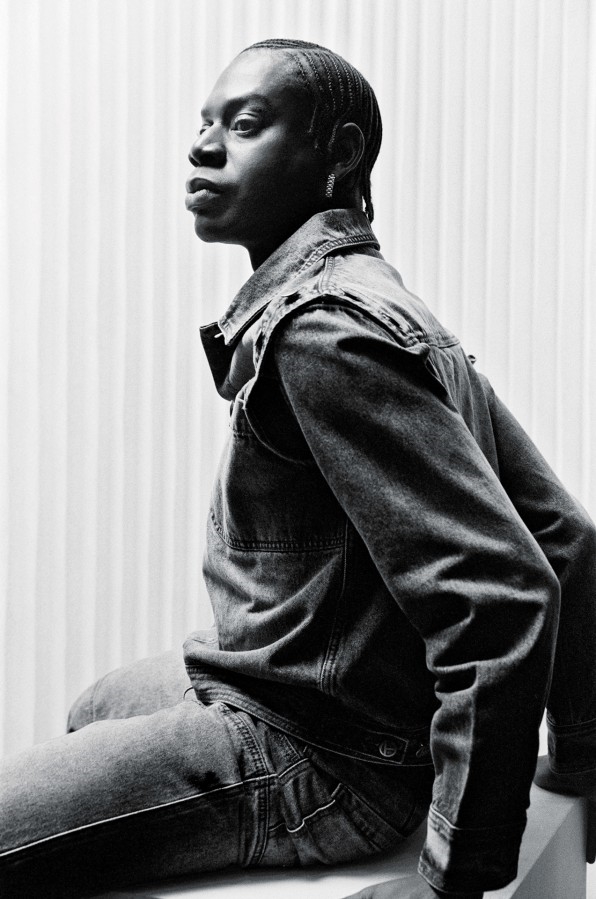
Late last year, as rumors swirled about who would succeed the late Virgil Abloh as Louis Vuitton’s menswear director, Clemens’s name was floated, alongside Grace Wales Bonner and Martine Rose, for the role that ultimately went to Pharrell Williams. Clemens was insulted that his name was invoked in an imaginary competition against other Black designers—not least because he didn’t even want the job. “The definition of success in the fashion industry is to leave your business to give all your ideas to a bigger fashion house, which can fire you at any time,” he says. “That’s what a lot of designers want for their lives, but that’s not me.”
With seven Telfar totes in her collection, New York–based beauty influencer Ohemaa Bonsu is an expert at snagging a bag. When the Telfar newsletter announces a drop, she puts the date on her calendar, sets a timer for a minute before the brand’s typical 9 a.m. sale time, and ensures that her browser will autofill her address and credit card details. “If you check out before 9:01, you’re going to get the bag,” she explains to her followers on YouTube. “At 9:02, you have a chance, but it might sell out. By 9:03, forget it.”
This sort of demand is typically reserved for top luxury labels and hype-beast staples like Supreme. Telfar straddles those worlds—it’s a status brand, but one subject to maintaining consumer interest in drops. Right now, that interest is high. On resale site Rebag, for instance, secondhand Telfar bags sell for nearly double their original retail price, making them a better investment than Hermès or Chanel. But while French luxury houses create desire and exclusivity by making bags prohibitively expensive, Clemens and Radboy have been deliberate about pricing products affordably, living up to the brand’s motto: “It’s not for you. It’s for everyone.”
“Telfar has managed to be both inclusive and exclusive,” says Hansen, of ALH Advisory. “It’s a truly authentic approach that is hard to replicate, which is why no one can really compete with them.”
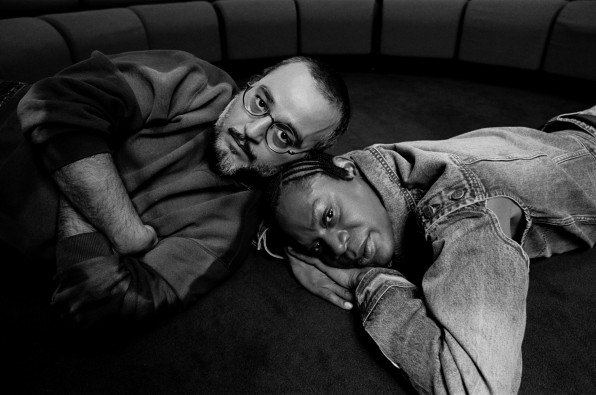
Clemens had long felt that retailers had too much control over Telfar’s prices and order volumes, so a year before the pandemic, he cut ties with them. He’s never taken capital from outside investors, bootstrapping the brand from its inception. In 2019, when Telfar needed cash to ramp up production in its Chinese factory, Clemens deployed the $400,000 he’d won from the CFDA/Vogue Fashion Fund prize, and customer preorders funded forthcoming collections. In 2020, when Gap announced a collaboration with Telfar only to unceremoniously back out of it, Clemens felt justified in staying clear of the rest of the fashion industry. “Our investors are our customers,” he says. “I want to keep as many [corporate] people away from us as possible.”
Telfar has baked community engagement into product drops. You need to be glued to its newsletter or social media feeds to hear about product launches. This rewards the brand’s die-hard fans and—thanks to a battery of checkout questions to prove shoppers aren’t bots—helps weed out speculators who buy bags only to resell them. “At many fashion brands, price is a barrier to entry,” says Radboy. “But for us, the barrier to entry is being plugged in. Our currency is connection.”
The pair has innovated on pricing too. A year ago, they started thinking about how to find a price point for popular items that would allow them to manufacture larger volumes at lower cost, passing the savings on to their customers. The result is a dynamic pricing tool that they began testing on Telfar’s website this March along with a new collection drop, and that was used to gather product demand data on drops through April. Each product in the drop was initially listed at its wholesale cost. But as the seconds ticked by, the price tags increased, with its normal retail price constituting its highest possible cost. The price of a product at the moment it sold out became its fixed price. For instance, the starting price of a black hoodie T-shirt, which might retail in stores for $272, was $68. Like many other products in the drop, it sold out within seconds, making its final price $127—and it will stay that way the next time Telfar sells it.
“It’s a complete reversal of how the fashion industry does things,” Radboy says. “The more they want it, the lower [the] cost.”
Telfar also uses collaborations to push back against the perception that it is a high-end label. During New York Fashion Week last September, the brand held a pop-up at the Downtown Brooklyn location of Rainbow, a value clothing chain known for giving budget shoppers access to the hottest trends, with shirts and shoes as low as $10.
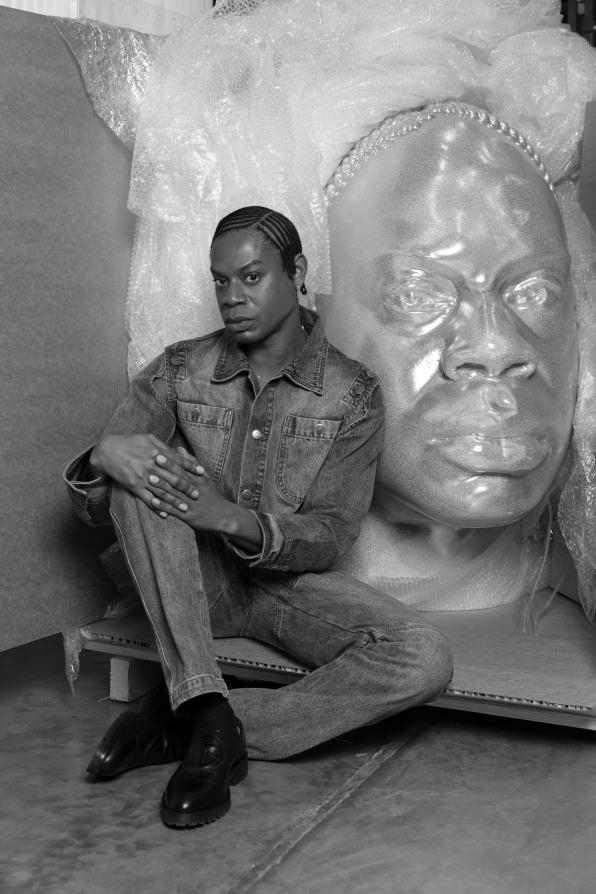
More than 7,000 Telfar fans swarmed the storefront for the one-day event. Telfar hired dancers to keep the crowds entertained; toddlers bopped along while they waited with their parents, carrying mini Telfar totes over their shoulders. The chaotic, carnivalesque atmosphere was a world away from other invite-only, velvet-rope fashion events happening a short train ride away in Manhattan. And it paid off—3,500 bags were sold from the storefront, and the related online drop sold 45,000 bags in the first 15 minutes.
“This was the first time many people in fashion had heard of Rainbow,” says Busayo Olupona, a Nigerian American fashion designer. “Telfar has completely upset notions of status, transforming the lowbrow into the highbrow. He’s forced the industry to take a closer look at customers they had never considered worth paying attention to before.”
The people who made it inside the storefront weren’t the only ones who were able to take part in the pop-up. The entire event was livestreamed on Telfar TV, the brand’s version of a public-access channel. Launched two years ago, Telfar TV—which can be viewed on Roku, Apple TV, and on the Telfar website—is meant to foster customer interaction. It initially was the only way to buy Telfar’s duffle bag, broadcasting QR codes that led to a purchase site.
Radboy and Clemens are making a big programming push for Telfar TV. They’ve partnered with Black film collective The Ummah Chroma to create TV shows for the channel, including unveiling upcoming collections and offering behind-the-scenes looks at the design process. They’ve already banked seven months’ worth of content that will begin streaming in the coming months alongside fan-submitted videos that currently comprise all of Telfar TV’s content. “Slowly, the content is going to meld, creating a feedback loop between us and our community,” Radboy says.
Telfar TV is a way for Clemens to deepen his relationship with the community that has long embraced him. As he looks ahead, he’s focused on knitting even closer ties with these customers, further growing a loyal base less fickle than the fashion world writ large. “It’s about keeping that relationship with our customer meaningful and entering the fabric of their lives,” Clemens says. “I feel like we’re only just beginning to get to know each other.”
(12)

